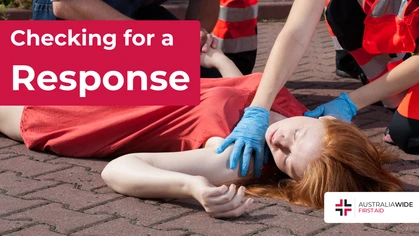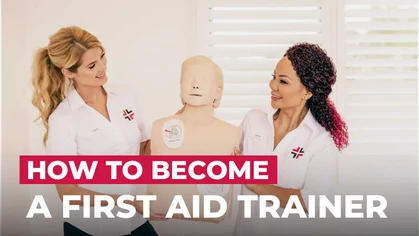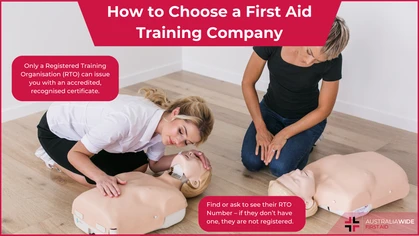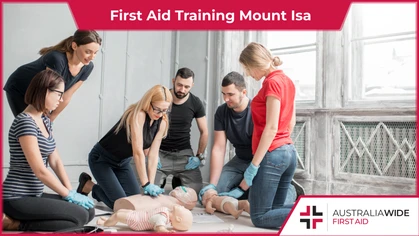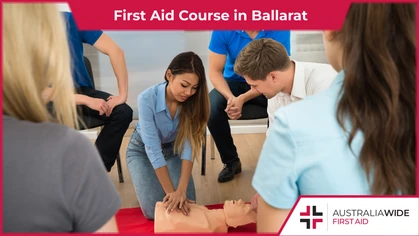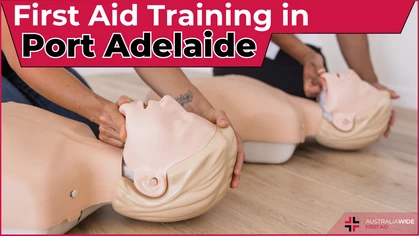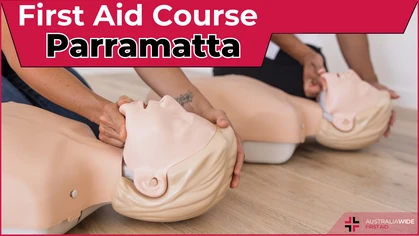Providing First Aid for Individuals with Hearing Impairments

First Aid Training
 Accidents and emergencies can happen to anyone, regardless of their abilities. When providing first aid to someone with a hearing impairment, it's essential to adapt your approach. Ensuring effective, compassionate communication and assistance is critical.
In this article, we will discuss the key steps and considerations for providing first aid to individuals with hearing impairments. By knowing these you will be better prepared to assist in an emergency situation.
Effective and respectful first aid can still be administered, even if you don’t know Auslan.
Accidents and emergencies can happen to anyone, regardless of their abilities. When providing first aid to someone with a hearing impairment, it's essential to adapt your approach. Ensuring effective, compassionate communication and assistance is critical.
In this article, we will discuss the key steps and considerations for providing first aid to individuals with hearing impairments. By knowing these you will be better prepared to assist in an emergency situation.
Effective and respectful first aid can still be administered, even if you don’t know Auslan.
Assess the Situation
The first step in providing first aid, regardless of the person's hearing ability, is to assess the situation for safety. Follow DRSABCD in all instances. Ensure that both you and the injured person are out of immediate danger before proceeding. If necessary, move the person to a safe location. Of course, if the person is unconscious, it is impossible to know they have a hearing impairment. Unless you know them personally or they have some form of identification stating so, you cannot assume either way. That is why it is critical to use physical touch to check for consciousness, such as squeezing their hands. If the person is unresponsive and not breathing, continue with DRSABCD and begin CPR as necessary.Gain Their Attention
If the person is conscious, it is important to gain permission before administering any first aid treatments. For someone with a hearing impairment, attracting their attention may be different from a hearing person. You can try the following methods:- Visual cues: Wave your hands gently, or make eye contact to get their attention.
- Tactile cues: Gently touch the person's shoulder or arm to signal your presence.
Communicating with a Casualty who is Hard of Hearing
Communicate patiently, and never shout. Give them time to respond, and ask if there is a preferred communication method. If you know Auslan, proceed to communicate in this way. If not, use other types of communication as outlined below. You could ask if they can or want to lip-read. If they indicate that they can and want to lip read, speak clearly and always keep your mouth in line of sight of the casualty. Never turn away while you are speaking. It is still important to use additional forms of communication. If they have a hearing aid they may find it difficult to hear you in an emergency situation. Minimize background noise or move to a quieter area where possible. If the casualty has a support person with them, it is important to still communicate directly with the casualty. Bypassing them to talk to a support person, while it may be easier, is impolite. The support person could provide you with important information about their condition and how to provide care. However, main communication should always be with the casualty if possible.Use Written Communication
Written communication may make it easier to gain and convey information about the situation and injuries. If you have a notepad and pen, communicate with the person in writing. Write clear, concise messages about the situation, your intention to help, and what you plan to do. Make sure to use simple language and avoid medical jargon. A disadvantage of written communication in this form is that it can take precious time to write clearly. If you have a mobile, open a word processing app such as Notes and communicate that way. Don’t delete any of the text – keeping a record of your communication back and forth may be useful later on.Use Non-Verbal Communication
Eye contact, facial expressions, and body language play a significant role in conveying information. Nonverbal cues will be essential. Maintain eye contact and use gestures to explain your actions. For example, point to your first aid kit or indicate the area you plan to check. Show each item that you intend to use clearly, indicating how you plan to use it. Keep your face and body calm, and use slow and gentle movements.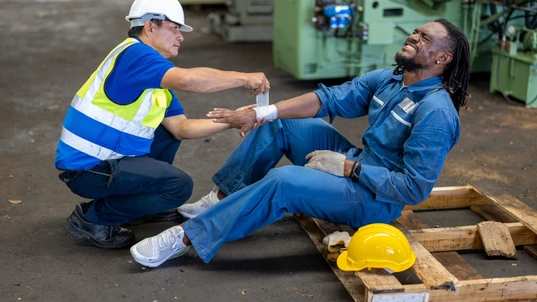
Keeping your face visible to the casualty will aid in communication.
Check for Allergies and Medical Conditions
Ask the person if they have any allergies or medical conditions. Use written or visual aids to clarify your question. It's essential to know if they have any specific medical needs or allergies that may impact the first aid you provide.Provide First Aid
Depending on the nature of the injury or illness, provide first aid as required. Use clear and concise non-verbal communication to explain your actions and provide reassurance throughout the process. Wound Care: If there's bleeding, use written instructions to explain that you'll clean and dress the wound. Show the materials you intend to use. Fractures and Sprains: For bone injuries, stabilize the affected area and immobilize it. Communicate this visually and through gentle touch. Choking: If the person is choking, use back blows and encourage them to cough forcefully. Ensure they understand your actions through gestures and facial expressions.Monitor and Comfort
After providing first aid, continue to monitor the person's condition. Offer comfort through non-verbal gestures like patting their shoulder or offering a reassuring smile. Stay with them until professional help arrives, if necessary.Conclusion
Providing first aid to someone with a hearing impairment requires effective communication and a compassionate approach. Remember to remain calm, use non-verbal cues, and adapt your communication methods to ensure the person understands and feels safe. Being prepared and knowledgeable in providing first aid to individuals with hearing impairments can make a significant difference in emergency situations. Upskilling yourself will allow you to potentially save lives and reduce the impact of injuries.
Originally published at
https://www.australiawidefirstaid.com.au/resources/providing-first-aid-hearing-impairments
as part of the Australia Wide First Aid Articles Library
